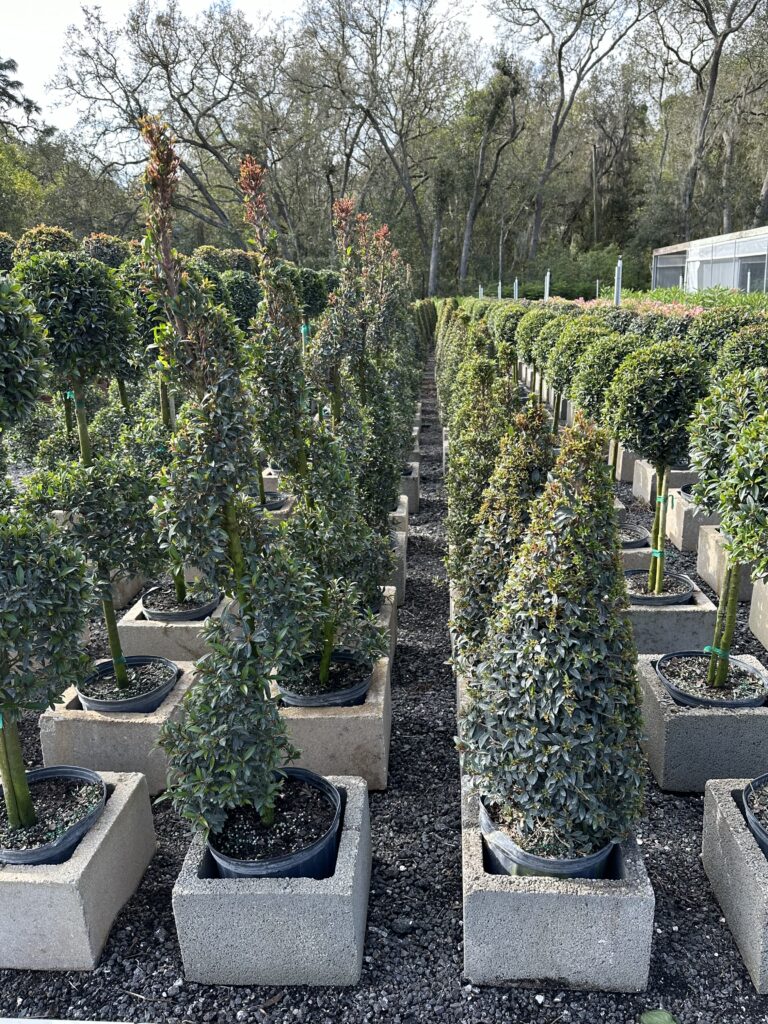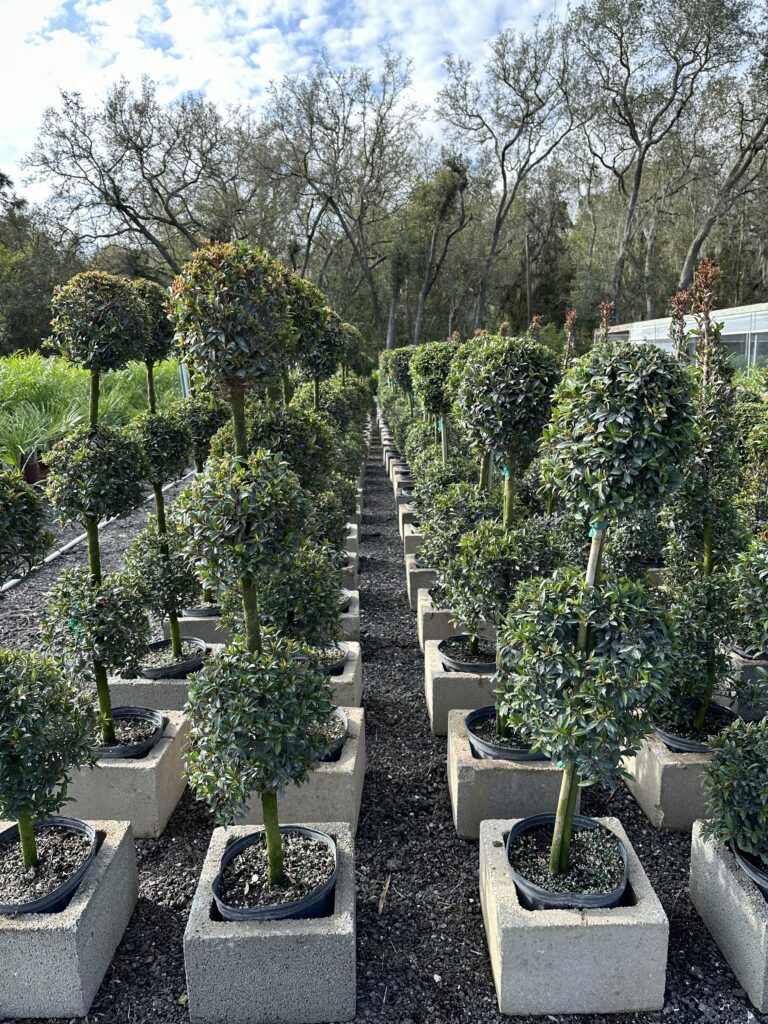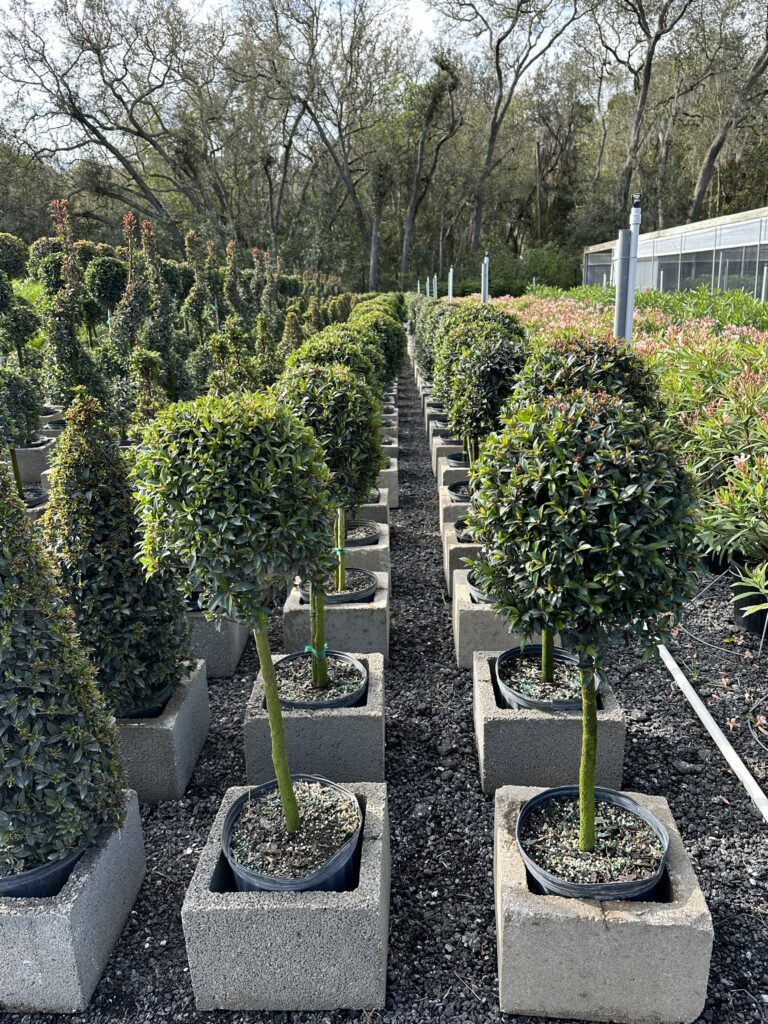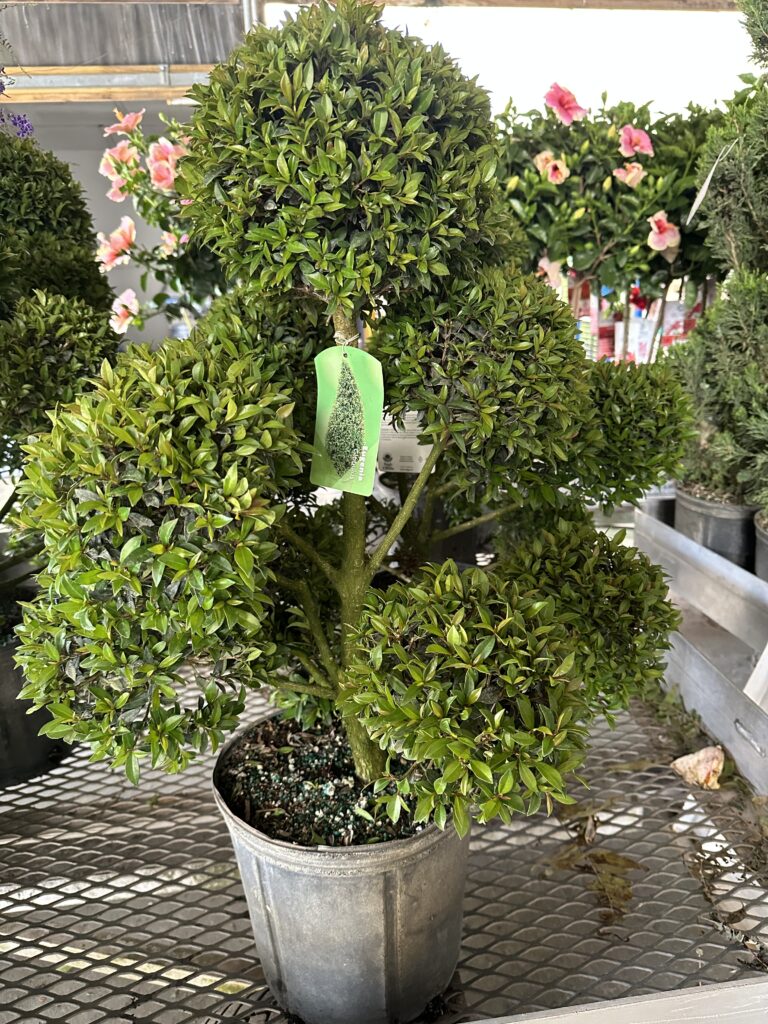Eugenia is a genus of tropical and subtropical plants known for their varied species, which can range from small shrubs to large trees. These plants belong to the Myrtaceae family and are appreciated for their attractive foliage, fragrant flowers, and sometimes edible fruits.
We offer these in 10″ and 14″ pot sizes in three ball, two ball, one ball, spiral, cone, and pom pom.
Here’s a closer look at some key aspects of Eugenia plants.
Eugenia myrtifolia (Small-leafed Eugenia) is a compact shrub often used as a decorative plant or hedge. It has small, glossy leaves and produces small white or pink flowers.
Appearance
Leaves: Eugenia plants generally have glossy, evergreen leaves that can vary in shape and size depending on the species. The leaves are often aromatic when crushed.
Flowers: The flowers are usually small and can be white, pink, or red. They are often fragrant and appear in clusters.
Growth and Care
Eugenia plants thrive in tropical and subtropical climates. They can be sensitive to frost and may require protection in cooler areas.
Sunlight: They prefer full sun to partial shade. In regions with very hot climates, some afternoon shade can be beneficial.
Watering: Regular watering is essential, especially during dry periods. However, they should not be waterlogged. Allow the topsoil to dry out slightly between waterings.
Soil: Well-draining soil is crucial. A mix of loam, sand, and organic matter works well. Good drainage helps prevent root rot.
Fertilizing: Feed with a balanced fertilizer during the growing season (spring and summer). Reduce feeding in the winter when the plant’s growth slows.
Propagation
Cuttings: Many Eugenia species can be propagated from semi-hardwood cuttings taken in late summer or early fall. Use rooting hormone to increase the chances of success.
Seeds: Some species can also be grown from seeds. Ensure seeds are fresh and plant them in a well-draining mix. Germination can take a few weeks to several months.
Challenges
Pests: Eugenia plants can be susceptible to pests such as scale insects, aphids, and spider mites. Regular inspection and treatment are important for managing infestations.
Diseases: Overwatering can lead to fungal diseases and root rot. Ensure proper drainage and avoid letting the plant sit in stagnant water.
Uses
Ornamental: Eugenia plants are popular in landscaping for their attractive foliage and flowers. They can be used as hedges, specimen plants, or in garden beds.
Edible: Species like the Surinam cherry and Brazilian cherry are grown for their edible fruits, which can be enjoyed fresh or used in culinary applications.
Eugenia plants offer a range of benefits from their aesthetic appeal to their fruit production, making them a versatile choice for gardens in suitable climates.
If you have any questions, feel free to call us at (352) 735-8350 or come by the nursery. Our hours are Monday-Friday 8-5 p.m.




